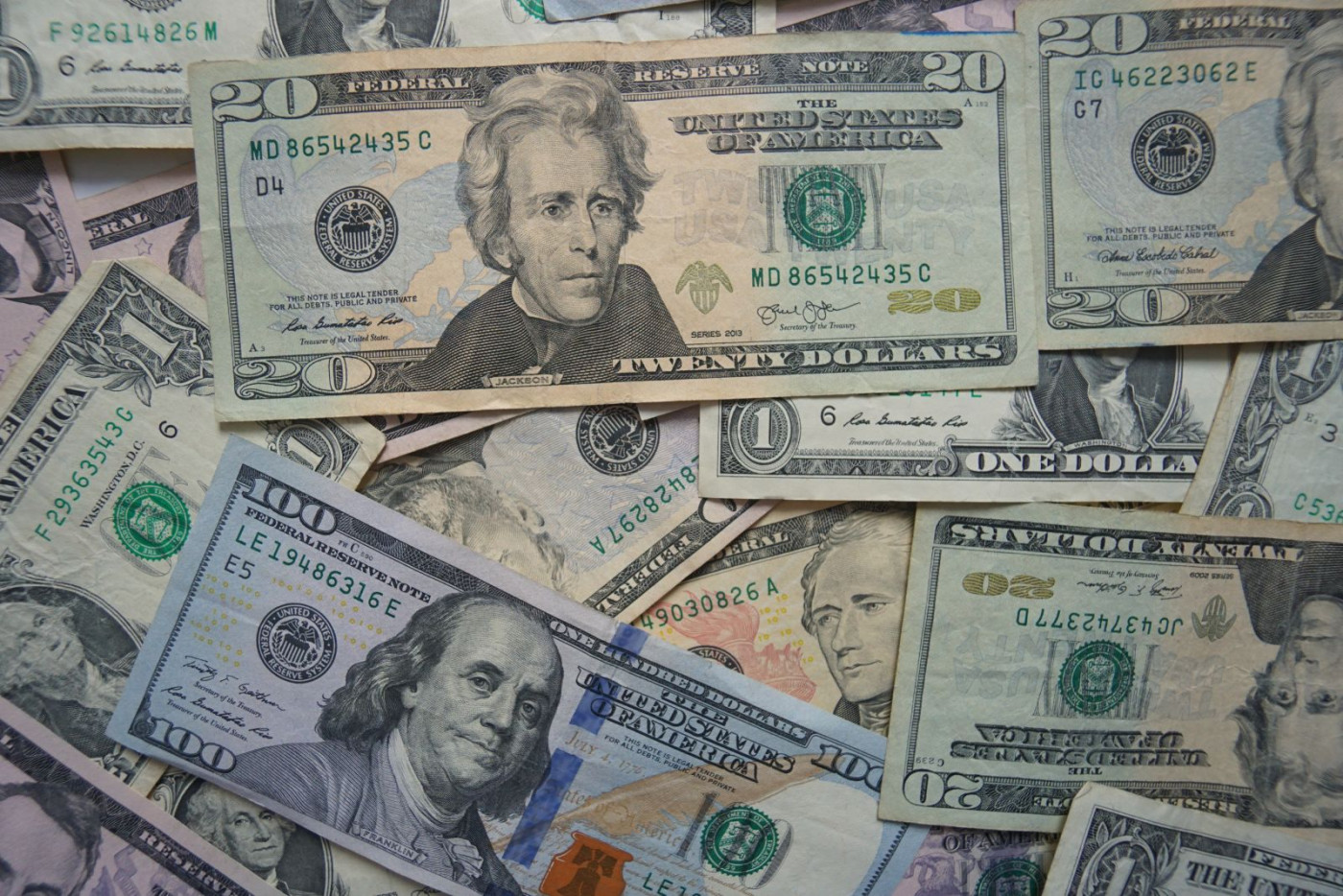The North Atlantic Hurricane Season runs from June 1 until November 30, and according to the National Oceanic and Atmospheric Administration (NOAA), experts predict an 85% chance of an “above-normal” and only a 10% chance of a “near-normal” season.
Millions of Americans living along the Atlantic Ocean and the Gulf of Mexico are bracing for what could become one of the most active hurricane seasons on record as rapid climate change continues to drive severe weather patterns across the northern hemisphere.
Though it’s not possible to predict how much damage hurricanes and severe weather events will cost insurers and the government this year, a recent analysis revealed that last year around 50 insurers reported $147.3 million in net income, a surprise turnaround compared to $1 billion in net losses from the previous two years.
An S&P Global Market Intelligence report found that despite some of America’s biggest insurance providers pulling out of some states, and dropping clients due to rising repair costs as inflationary pressures bite into their profits, some companies have managed to make money last year, although for the first time in more than seven years.
The somewhat mild hurricane season of last year, on the back of stronger investment capital, helped bolster returns for some insurance providers, although costs and the number of new claims remain elevated.
Severe weather that brings billions of dollars in repair costs and damage eludes the deep-rooted culture that money and investment drive the American culture and, most importantly, the economy.
With a wet and wild season on the horizon, investors should consider several companies to keep on their radar as we begin to approach yet another active hurricane season.
Berkshire Hathaway
Investing conglomerate Berkshire Hathaway (NYSE: BRK) is considered as the who’s who of American business. The financial giant holds a broadly diversified portfolio of subsidiaries, which allows the company and shareholders to benefit from long-term stability, and overall calamity during periods of regression in the insurance industry.
Fortunately, Berkshire owns the entirety of GEICO, an insurance company known as being one of the first American insurance providers that directly marketed to consumers.
Berkshire carefully leverages this position to benefit from near-term capital, seeing as insurance policies are collected upfront, allowing them to hold onto huge amounts of cash to cover future claims and payouts.
CEO of Berkshire Warren Buffett had previously called this an “insurance float” for the company, which allows them to make larger, and perhaps more riskier investments, which had previously played in their favor.
By the close of last year, Berkshire’s insurance business segment, which includes GEICO, EastGUARD Insurance Company, NorGAURD Insurance Company, and AZGUARD Insurance including others generated nearly $169 billion in total capital float.
While the capital float remains an important key that helps drive long-term success for Berkshire investors, the company currently controls around 14.05% of the American auto insurance market through GEICO and its more than 16 million active auto policies. In total, the company insures more than 28 million vehicles and controls roughly $32 billion in assets.
On top of this, GEICO provides customers with more specialized policies, including earthquake and flooding insurance for a wide variety of vehicles, homes, and other property types. Last year the company reported more than $3.6 billion in pretax underwriting profits and reversed a $1.9 billion in underwritten losses for 2022.
GEOCI reported eye-watering profits last year, seeing primary operations growing three times higher compared to 2022, and nearly doubling since 2021. In total, written premiums swelled by 24.1% to $3.5 billion, which further added towards the $5 billion pretax underwriting for all of Berkshire’s insurance operations in 2023.
While some investors might feel this is a long shot, considering the price point at which BRK is currently trading, and the amount of time investors will need before they can see a steady return on their investment, BRK is perhaps a safer, more confident bet on the homeowners insurance industry.
Chubb
Global insurance provider Chubb (NYSE: CB) has continued to push through the challenges faced in the insurance market, seeing record-shattering profits and underwriting revenues for both its Q1 2024 and Q4 2023.
The company reported improvements across the board, with total net income up 13.3% to $2.14 billion while core operating income has improved 20.3% to $2.22 billion for Q1 2024. The strong returns were largely driven by the “modest” incremental tax deferred tax benefit of $5 million related to the Bermuda tax law that was enacted in December 2023.
Favorable tax laws and charitable giving aren’t the only financial items that have helped drive better-than-expected first-quarter performance. Chubb executives witnessed a steady rise in property & casualty (P&C) net premiums written. In total, P&C premiums written rose 13.3%, with commercial insurance up 11.1% and consumer insurance segments up 19.3%.
Growth in all operating regions remained strong, as North American personal insurance and commercial insurance products held steady, growing 12.3% and 9.4%, respectively, while the entire North American region grew 10.1%.
Although the company has seen continued improvement in its North American region, which includes the U.S. and Canada, the majority of its current business operations are located abroad, including Europe and Asia.
While investors might have cold feet concerning investment opportunities in the insurance market, research has found that severe weather conditions and natural disasters, such as hurricanes, may lead to negative returns on the stock market, however on the upside these events won’t cause long-term decline or disruptive abnormal returns for insurance stocks.
Yet, this shouldn’t be the sole factor that leads investors to propping up their portfolios with insurance stocks. Holding a more balanced, and evenly spread portfolio could provide them with more stability, and investing in a variety of insurance stocks that are active across various markets could provide more long-term sustainability.
Despite the uncertainties, and the ongoing rise of insurance claims shaking up the balance sheets of insurance providers, Chubb remains highly profitable, in fact, its current revenues currently sit between $48 - $60 billion, according to recent estimates.
It’s safe to say that Chubb is perhaps in a very comfortable position considering that many insurance providers have been struggling to turn a profit in recent years or seeing a strong decline in returns.
The last couple of months have been very favorable for Chubb with investors seeing stock performance rise more than 36% in the last months, and seeing a strong improvement of 15.69% since the turn of the year.
On top of this, the company has increased its dividend for more than 20 consecutive years and currently pays $0.91 in regular cash dividends. The company provides the long-term stability investors could be looking for, with strong underwriting income, seeing an improvement of 15.4%, and a combined ratio of 86%.
Home Depot
The hunt for blue-chip stock winners continues with Home Depot (NYSE: HD), considered one of America’s largest home improvement companies and direct-to-consumer product providers for all things home improvement and renovations.
Despite the majority of big-box retailers struggling to keep up with rising prices, employee shortages, and ongoing supply chain constraints, Home Depot has managed to outperform market expectations, although many of these issues have bitten into the company’s bottom line over recent quarters.
Home Depot is a unique opportunity for investors, especially during hurricane season. The company’s market share and current price-to-earnings ratio give it a more competitive advantage for investors seeking to hold a more sustainable investment during uncertain trading periods.
Analysts that have been tracking the performance of HD before and after a hurricane season have found that stock prices tend to jump, however, these improvements tend to remain within the single digits.
During the first quarter, the company reported lower-than-expected earnings, with net earnings of $3.6 billion, or $3.63 per diluted share for Q1 2024, compared to $3.9 billion, or $3.82 per diluted share for Q1 2023.
The slight decline comes as the multinational home improvement retailer announced an overall decline in reported sales, though the decline was smaller than anticipated. For the first quarter, Home Depot reported $36.4 billion in sales representing a decline of 2.3% compared to the same period last year. Total U.S. sales were down 3.2 %
Despite earnings coming in slightly below analysts' expectations, there were some positive highlights during the first quarter.
For instance, the company said that it’s opened 12 new stores, despite many retailers cutting back on expansion projects as high rents and red-hot interest rates push many companies to hold off until conditions have started to stabilize. Then, the company managed to maintain a gross operating margin of 33.9% and remained an attractive target despite inflationary pressures.
The stock market reacted slightly differently to the news of the company not meeting targets. Year-to-date performance remains positive, improving 2.55% since the start of the year, however, prices are down nearly 11% since their earlier peak in March.
For much of the company’s second-quarter stock prices have remained steady, however, the warmer weather conditions may be helping the company’s stock, with prices seen moving north in recent weeks despite the somewhat hawkish performance recorded during the first half of the year.
So why does all of this matter? For starters, Home Depot makes an attractive big-box retailer that provides steady long-term price stability. Then, the company tends to see improved sales and better-than-expected performance during hurricane season, as more homeowners rush to fortify their homes or begin with renovation projects.
Finally, Home Depot recently finalized the acquisition of SRS Distribution could accelerate the company’s Pro Business segment, enabling it to address demand coming from residential customers and fulfillment services. The acquisition with SRS Distribution now brings the company’s total addressable market up to more than $1 trillion.
It’s a long shot, but there’s still a lot of fuel left in Home Depot, meaning that investors could draw some benefit from holding a big box retailer in the home improvement market.
Now It’s Your Call
The seasons are changing, and investors are seeking new opportunities that can drive near-term growth and long-term stability. Despite the uncertainty that’s lingering over the insurance market, investors will need to begin addressing their needs with more agile investment options that can provide them with the sustainability they need, while tapping a still very much lucrative industry.
On the date of publication, Pierre Raymond did not have (either directly or indirectly) positions in any of the securities mentioned in this article. All information and data in this article is solely for informational purposes. For more information please view the Disclosure Policy here.
Disclaimer: The copyright of this article belongs to the original author. Reposting this article is solely for the purpose of information dissemination and does not constitute any investment advice. If there is any infringement, please contact us immediately. We will make corrections or deletions as necessary. Thank you.







